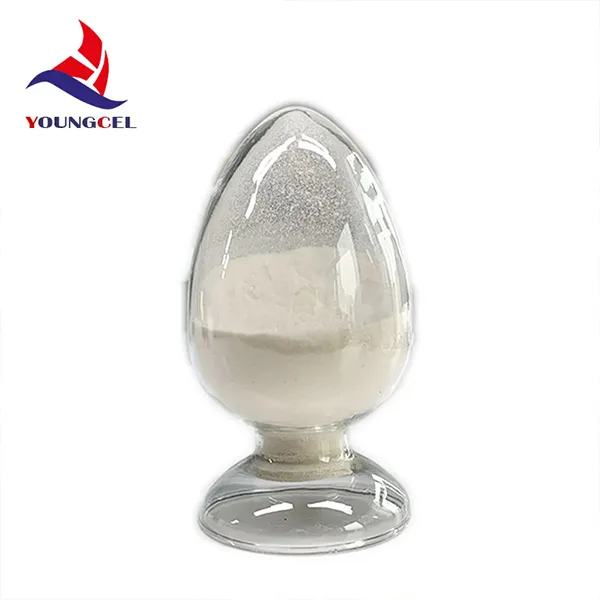The Versatility of Ethyl Hydroxyethyl Cellulose Applications and Benefits
Ethyl hydroxyethyl cellulose (EHEC) is a derivative of cellulose, a naturally occurring polymer that is abundant in plant cell walls. EHEC has garnered significant attention in various industries due to its unique properties and versatility. This article explores the characteristics, applications, and benefits of EHEC, highlighting its importance in modern formulations.
Properties of Ethyl Hydroxyethyl Cellulose
EHEC is a non-ionic, water-soluble polymer characterized by its ability to form viscous solutions and gels. This property is primarily due to the presence of both ethyl and hydroxyethyl substituents on the cellulose backbone, which enhance its solubility in water and organic solvents. EHEC is known for its low viscosity, high transparency, and excellent film-forming ability, making it a prime candidate for numerous applications.
The chemical structure of EHEC contributes to its thermal stability, making it effective across a range of temperatures. Additionally, EHEC is resistant to enzymes, acid, and alkali, which further broadens its application scope. The safety profile of EHEC is another pivotal aspect; it is biodegradable, non-toxic, and has been assessed as safe for use in food and pharmaceutical products.
Applications in Various Industries
1. Cosmetics and Personal Care EHEC is widely used in cosmetic formulations due to its thickening, emulsifying, and stabilizing properties. It enhances the texture of creams and lotions, ensuring a smooth application and improved sensory feel. Moreover, EHEC helps to stabilize emulsions, preventing the separation of oil and water phases in products like moisturizers, sunscreens, and gels.
2. Pharmaceuticals In the pharmaceutical industry, EHEC serves as a binder and disintegrant in tablet formulations. Its ability to modify the release of active ingredients is particularly valuable, as it can be utilized to create controlled-release formulations. This property ensures that the medication is delivered in a sustained manner, improving patient compliance and therapeutic efficacy.
3. Food Industry EHEC finds application as a food additive, where it acts as a thickening agent and stabilizer. It is used in sauces, dressings, and dairy products to improve texture and prevent separation. The ability of EHEC to retain moisture enhances the quality and shelf life of food products, making it a popular choice for food formulators.
ethyl hydroxi ethyl cellulos

4. Construction In the construction sector, EHEC is incorporated into cement and mortar formulations. Its water-retention properties contribute to improved workability, enabling smoother application and reducing cracking and shrinkage during the curing process. EHEC also helps to enhance the adhesion of plaster and tile mortars, ensuring durable construction materials.
5. Agriculture EHEC is employed in agricultural formulations, including pesticides and fertilizers. It helps in enhancing the viscosity of liquid formulations, allowing for better adherence to plant surfaces and controlled release of active ingredients. This leads to more effective pest control and improved utilization of nutrients by plants.
Benefits of Using Ethyl Hydroxyethyl Cellulose
The use of EHEC brings several advantages to various industries. One of the primary benefits is its ability to improve product stability and performance. By enhancing the texture and consistency of formulations, EHEC ensures a more appealing product to consumers.
Additionally, EHEC’s non-toxic and biodegradable nature aligns with the growing demand for sustainable ingredients in formulations. As consumers become increasingly conscious about the environmental impact of products, the use of natural and safe ingredients like EHEC becomes a significant selling point.
Furthermore, the versatility of EHEC allows for its incorporation into a myriad of applications, making it an invaluable ingredient for formulators seeking to optimize product performance. Its multifunctional characteristics enable formulators to streamline their processes while delivering high-quality products.
Conclusion
Ethyl hydroxyethyl cellulose is a remarkable polymer with a wide range of applications across various industries. Its unique properties make it an essential ingredient in cosmetics, pharmaceuticals, food, construction, and agriculture. By leveraging the benefits of EHEC, manufacturers can create superior products that meet consumer expectations while contributing to sustainability in formulation practices. As research and development continue in this field, the potential uses of EHEC are likely to expand, further solidifying its role as a key player in modern formulation science.
-
A Comprehensive Guide to Methyl Ethyl Hydroxyethyl Cellulose: Applications and Industry InsightsNewsNov.24,2025
-
Understanding Methyl 2 Hydroxyethyl Cellulose: Uses, Benefits & Industry InsightsNewsNov.24,2025
-
Hydroxyethyl Methyl Cellulose HEMC: Industrial Uses, Benefits & Future TrendsNewsNov.23,2025
-
HEMC Cellulose: Versatile & Sustainable Industrial Polymer | YoungcelNewsNov.23,2025
-
Methyl Hydroxyethyl Cellulose: Versatile Building Block for Industry & SustainabilityNewsNov.23,2025
-
CAS 9032 42 2: Understanding Polyvinyl Alcohol's Impact on Industry & SustainabilityNewsNov.22,2025




